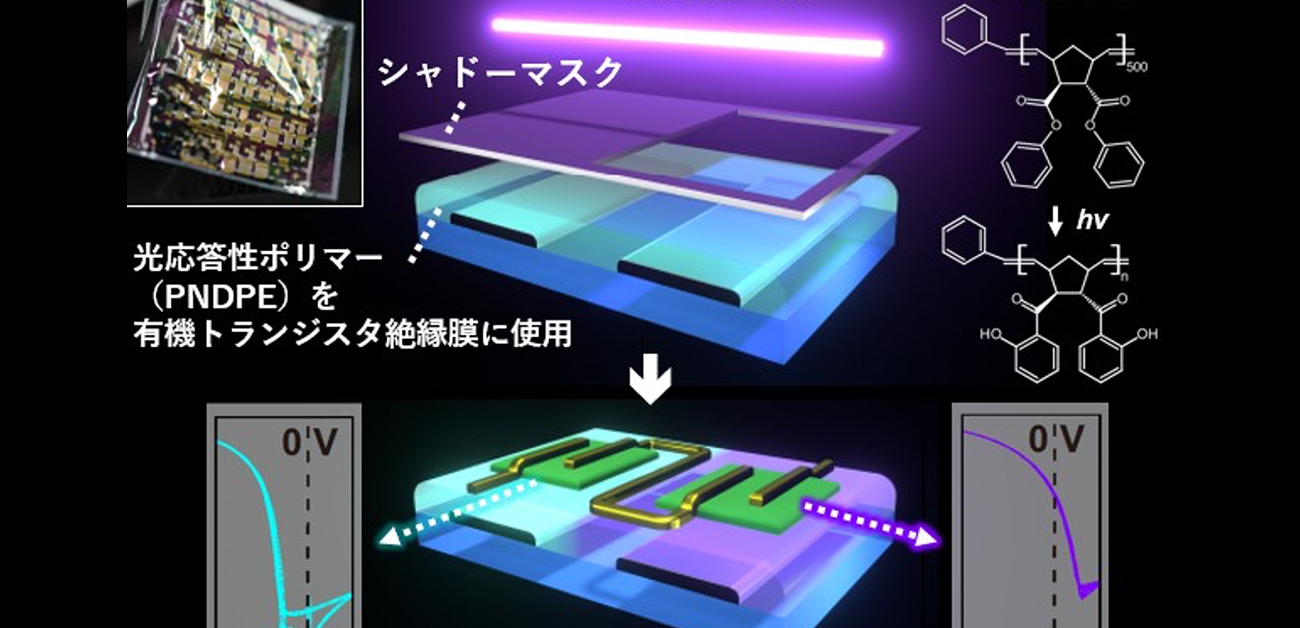
Tuning flexible circuits with light
Researchers use ultraviolet light to tune circuit performance with a photoreactive polymer based on controlled changes in the chemical structure, which may lead to the development of wearable electronics and medical sensors
Researchers from SANKEN (The Institute of Scientific and Industrial Research) at Osaka University and JOANNEUM RESEARCH (Weiz, Austria), have shown how exposing an organic polymer to ultraviolet light can precisely modify its electronic properties. This work may aid in the commercialization of flexible electronics that can be used for real-time healthcare monitoring, along with data processing.
While the integrated circuits inside your smart phone are quite impressive, they lack certain important features. Because the electronics are silicon based, they are very rigid, both in the literal sense of being inflexible, as well as having chemical properties that are not easily altered. Newer devices, including OLED displays, are made from carbon-based organic molecules with chemical properties than can be tuned by scientists to produce the most efficient circuits. However, controlling the characteristics of organic transistors usually requires the integration of complex structures made of various materials.
Now, a team of researchers led by Osaka University have used UV light to precisely change the chemical structure of a dielectric polymer called PNDPE. The light breaks specific bonds in the polymer, which can then rearrange into new versions, or create crosslinks between strands. The longer the light is on, the more the polymer get altered. By using a shadow mask, the UV light is applied to just the desired areas, tuning the circuit behavior. This method can pattern transistors of the desired threshold voltage with high spatial resolution using just a single material.
“We have succeeded in controlling the characteristics of organic integrated circuits using persistent light-induced changes in the molecular structure itself,” study corresponding author Takafumi Uemura explains.
In the future, we may see smart versions of almost everything, from medicine bottles to safety vests. “Meeting the computational demands of ‘the Internet of Things’ will very likely require flexible electronic solutions,” senior author Tsuyoshi Sekitani says. In particular, this technology can be applied to manufacturing methods for ultra-lightweight wearable healthcare devices.

Figure 1: Schematic showing the process that allows for precise control of the organic transistor characteristics using light irradiation. The inset displays a photograph of the final device. (credit: Takafumi Uemura et al.)

Figure 2: (Left) Relationship between the light illumination (dose) and the threshold voltage (Vth) for the organic transistors. (Right) FTIR microscopy image showing the two-dimensional spatial distribution of the molecular structure alteration. Certain regions were partially irradiated to create the Osaka University logo, with an estimated spatial resolution of ~18 µm. (credit: Takafumi Uemura et al.)
The article, “Heterogeneous functional dielectric patterns for charge carrier modulation in ultraflexible organic integrated circuits” was published in Advanced Materials at DOI: https://onlinelibrary.wiley.com/doi/10.1002/adma.202104446.
Related Links
Sustainable Development Goals (SDGs)

